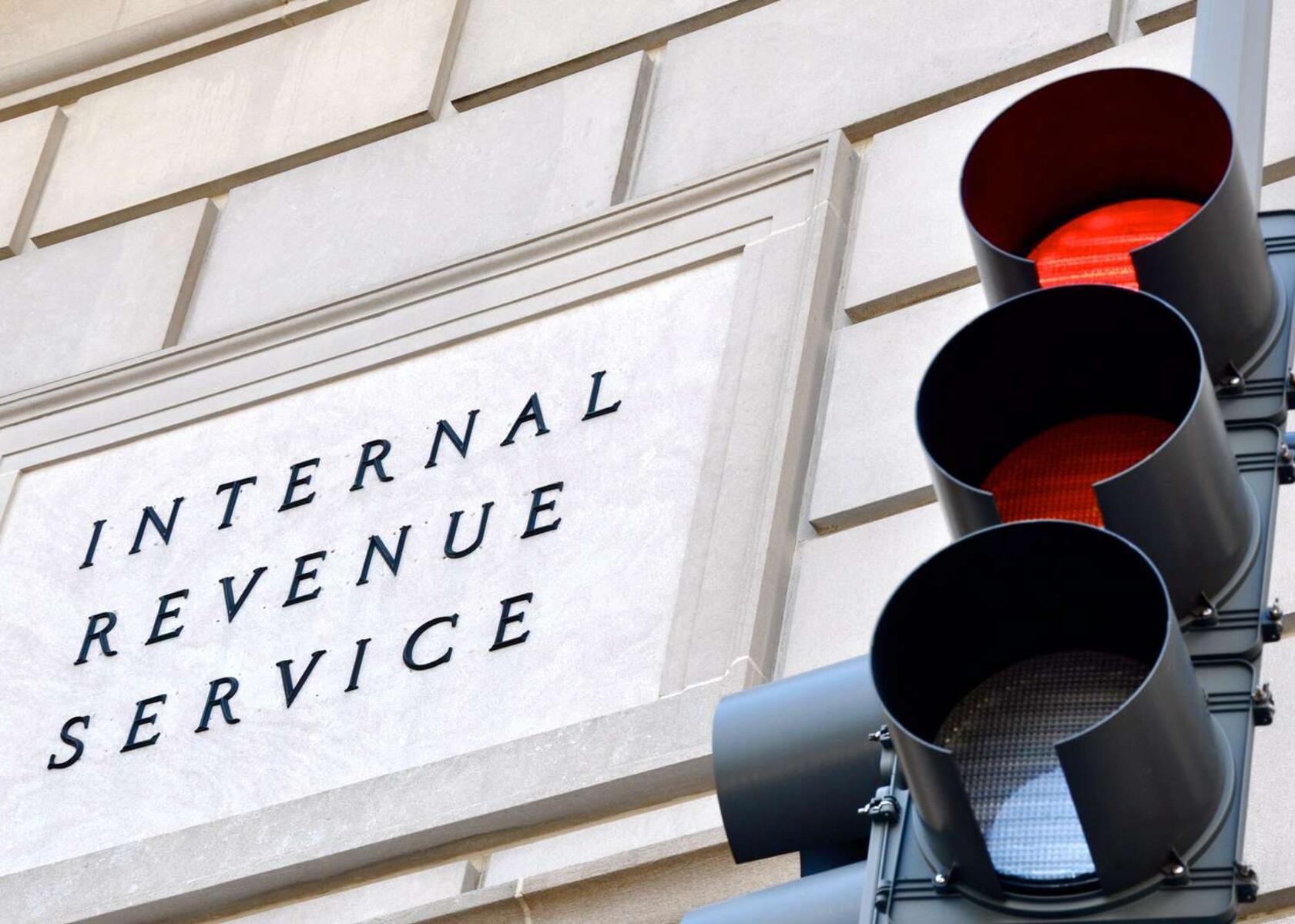Introduction
Welcome to the world of banking, where financial transactions are not just numbers on a screen, but intricate processes that require careful monitoring and reporting. In this article, we will delve into the meaning and significance of CTR in banking. If you have ever come across this acronym and wondered what it stands for, you are in the right place.
CTR, which stands for Currency Transaction Report, is a critical element in the banking industry. It is a tool used by financial institutions and regulatory bodies to detect and prevent money laundering, terrorist financing, and other illicit activities. Understanding CTR is essential for customers and banking professionals alike.
As the world becomes increasingly connected and financial transactions become more complex, the need for effective monitoring and reporting mechanisms is paramount. Financial institutions have a legal obligation to identify and report transactions that meet certain criteria, in order to combat money laundering and maintain the integrity and stability of the banking system.
Throughout this article, we will explore the definition and purpose of CTR, the legal requirements around it, how CTRs impact banks, examples of CTR transactions, and the importance of accurate reporting. By the end, you will have a comprehensive understanding of CTR and its significance in the realm of banking.
Definition of CTR
A Currency Transaction Report (CTR) is a document that financial institutions are required to file with the appropriate regulatory authorities when a customer conducts a cash transaction over a specified threshold. The purpose of a CTR is to track and monitor potentially suspicious or illegal activities related to large cash transactions.
CTR regulations vary from country to country, but they are generally designed to help prevent money laundering, terrorist financing, and other illicit activities. The specifics of CTR requirements can differ depending on the jurisdiction and the financial institution involved. However, the underlying principle remains the same: to ensure transparency, accountability, and security within the banking system.
When a transaction meets the threshold determined by the regulatory authorities, the financial institution is obligated to collect information about the transaction and file a CTR. This information typically includes the customer’s name, address, social security or identification number, the transaction amount, and other relevant details. It is important to note that CTRs do not necessarily indicate illegal activity; they are simply part of the regulatory framework established to detect and deter potential risks in the financial system.
The threshold for a cash transaction that triggers a CTR can vary depending on the jurisdiction, but it is usually set at a relatively high amount. This threshold is determined to strike a balance between detecting transactions that may be indicative of illegal activities while not burdening financial institutions with excessive reporting requirements for routine and low-risk transactions.
CTR thresholds can also differ based on the type of entity conducting the transaction. For example, individuals might have a higher threshold compared to businesses. Similarly, certain industries, such as casinos or jewelers, may have lower thresholds due to the nature of their business and the potential risks associated with large cash transactions in those sectors.
Purpose of CTR
The primary purpose of Currency Transaction Reports (CTRs) is to combat money laundering, terrorist financing, and other illegal activities within the banking system. CTRs serve as a crucial tool for financial institutions and regulatory bodies to monitor and track large cash transactions and identify potential risks or suspicious patterns.
Money laundering involves disguising the origins of illegally obtained funds to make them appear legitimate. By monitoring cash transactions over a certain threshold, CTRs help authorities identify and investigate transactions that may be linked to illicit activities. This serves as a deterrent to criminals seeking to launder their money through the banking system.
Terrorist financing is another major concern for governments and financial institutions. Terrorist organizations often rely on financial networks to fund their activities. By requiring reporting on large cash transactions, CTRs aid in detecting suspicious financial behavior that may be indicative of funding terrorist activities.
In addition to combating money laundering and terrorist financing, CTRs also fulfill other important purposes. They contribute to maintaining the integrity and stability of the banking system by promoting transparency and accountability. By monitoring and reporting cash transactions, CTRs help prevent fraud, tax evasion, and other financial crimes that can harm individuals and society as a whole.
CTRs also assist regulatory bodies in assessing the overall health of the economy and identifying potential risks or vulnerabilities. By analyzing the data from CTRs, authorities can gain valuable insights into the flow of funds, economic trends, and potential threats to financial stability. This information can inform policymaking and help develop effective strategies to combat financial crimes.
Furthermore, CTRs help financial institutions meet their regulatory obligations and demonstrate compliance with anti-money laundering and counter-terrorism financing laws. Failure to report transactions that meet the CTR threshold can result in severe penalties, including fines and reputational damage. Therefore, financial institutions have a strong incentive to ensure accurate and timely reporting of CTRs.
Overall, the purpose of CTRs is multi-faceted, encompassing the prevention of money laundering and terrorist financing, safeguarding the banking system, promoting transparency, and supporting regulatory compliance. By fulfilling these purposes, CTRs play a crucial role in maintaining the integrity and security of the financial system.
Legal Requirements for CTRs
The filing of Currency Transaction Reports (CTRs) is a legal requirement imposed on financial institutions by regulatory authorities in order to combat money laundering, terrorist financing, and other illicit activities. These requirements vary from country to country, but they generally share common elements and principles.
Financial institutions are obligated to establish systems and procedures to identify cash transactions that meet the threshold set by the regulatory authorities. The threshold is typically a predetermined amount, above which the transaction triggers the requirement to file a CTR. The specific threshold can vary depending on factors such as the jurisdiction, the type of entity conducting the transaction, and the nature of the industry or business.
When a transaction surpasses the threshold, the financial institution must collect and report specific information about the transaction and the parties involved. This information typically includes details such as the customer’s name, address, social security or identification number, the transaction amount, and any other relevant information as required by the regulatory authorities.
Financial institutions also have an obligation to implement robust Know Your Customer (KYC) procedures. These procedures are designed to verify the identity of customers and assess the level of risk associated with their transactions. By conducting due diligence and gathering information about customers, financial institutions can better detect suspicious activities and ensure compliance with CTR reporting requirements.
It is important for financial institutions to follow strict guidelines and timelines for filing CTRs. Failure to meet the reporting requirements can result in serious consequences, including regulatory sanctions, fines, and potential legal consequences. Therefore, financial institutions allocate significant resources to ensure compliance with CTR reporting obligations.
Regulatory bodies play a critical role in enforcing compliance with CTR requirements. They conduct regular inspections, audits, and assessments to ensure financial institutions are adhering to the rules and regulations surrounding CTRs. Non-compliance can lead to significant penalties and damage to a financial institution’s reputation.
Additionally, it is worth noting that some countries have mechanisms in place to share CTR information across borders. This international cooperation allows regulatory authorities to track cross-border transactions and identify potential money laundering or terrorist financing activities on a global scale.
Overall, the legal requirements for CTRs aim to promote transparency, security, and accountability within the banking system. By imposing these requirements, regulatory authorities work in tandem with financial institutions to combat financial crimes and maintain the integrity of the financial system.
How CTRs Impact Banks
The filing of Currency Transaction Reports (CTRs) has a significant impact on banks and financial institutions. Compliance with CTR requirements is not just a regulatory obligation; it also carries operational, financial, and reputational implications for banks.
First and foremost, CTRs require banks to allocate resources and implement robust compliance programs. Financial institutions must establish systems and processes to identify transactions that meet the reporting threshold and collect the necessary information to file accurate CTRs. This involves investing in technology, training personnel, and staying up-to-date with regulatory developments.
Furthermore, banks must ensure that their Know Your Customer (KYC) procedures are adequate to verify the identity of customers and assess the risks associated with their transactions. KYC processes play a crucial role in detecting and deterring potential financial crimes, and failure in this aspect can lead to regulatory scrutiny and penalties.
Financial institutions also need to prioritize the timely and accurate submission of CTRs. Any delays or inaccuracies in the reporting process can result in regulatory sanctions, fines, or reputational damage. Therefore, banks must establish internal controls and robust reporting workflows to meet their CTR obligations effectively.
From a financial perspective, banks may incur costs associated with implementing and maintaining CTR compliance. This includes investment in technology, staff training, and ongoing monitoring of transactions. Additionally, any penalties or fines resulting from non-compliance can have a direct impact on a bank’s bottom line. Therefore, maintaining CTR compliance is not just a regulatory requirement but also a sound financial practice.
Moreover, the impact of CTRs goes beyond compliance and operational considerations. The existence of robust CTR reporting mechanisms enhances the overall reputation and trustworthiness of the financial institution. Customers are more likely to feel confident in conducting transactions with a bank that demonstrates its commitment to combating financial crimes and maintaining a secure banking environment.
Certain industries, such as casinos or high-risk businesses, may experience additional impacts from CTRs. These sectors often have lower reporting thresholds due to their susceptibility to money laundering or other illicit activities. As a result, banks serving these industries may need to establish specialized compliance programs tailored to their specific risk profiles.
Overall, CTRs have a wide-ranging impact on banks and financial institutions. Compliance with CTR requirements necessitates resource allocation, robust compliance programs, timely reporting, and adherence to KYC procedures. Financial implications, including potential costs and penalties, as well as the impact on the institution’s reputation, underline the importance of CTR compliance for banks.
Elements of a CTR
A Currency Transaction Report (CTR) is a document that contains specific information about a cash transaction that exceeds the threshold set by regulatory authorities. The elements of a CTR can vary depending on the jurisdiction and the specific requirements of the financial institution, but there are common elements present in most CTRs.
1. Customer Information: A CTR includes the customer’s identifying information, such as their name, address, social security or identification number, and other relevant details. This information helps authorities track and monitor individuals involved in large cash transactions.
2. Transaction Details: The CTR includes information regarding the cash transaction, including the date, time, and location of the transaction. It also specifies whether the transaction is a deposit, withdrawal, or other type of transaction.
3. Amount of Transaction: The CTR indicates the total amount of cash involved in the transaction. This allows authorities to track large transfers of funds and identify potential money laundering or illicit activities.
4. Source of Funds: Financial institutions are often required to include information about the source of the funds involved in the cash transaction. This is crucial in identifying any suspicious or illegal activities related to the transaction.
5. Purpose of Transaction: Some CTRs may require customers to provide information about the purpose of the transaction. This helps authorities determine whether the transaction aligns with the customer’s usual financial activities and can uncover any potential discrepancies or suspicious behavior.
6. Personal Information of Employees: In certain cases, the CTR may include the personal information of the financial institution’s employees who facilitated or authorized the cash transaction. This serves as an additional layer of accountability and aids in ensuring compliance with regulatory requirements.
7. Certifications and Signatures: A CTR may require certifications or signatures from the customer, the employee conducting the transaction, and the financial institution itself. These certifications confirm the accuracy and legitimacy of the information provided in the report.
It is important to note that while these are common elements found in a CTR, the specific requirements may differ depending on the jurisdiction and the applicable regulatory framework. Financial institutions should familiarize themselves with the specific guidelines set forth by their regulatory authorities to ensure accurate and compliant filing of CTRs.
By including these essential elements in a CTR, financial institutions provide relevant information to regulatory authorities, allowing them to monitor and analyze cash transactions for potential money laundering, terrorist financing, and other illicit activities. The comprehensive nature of the CTR ensures transparency and aids in maintaining the integrity of the financial system.
Examples of CTR Transactions
Currency Transaction Reports (CTRs) are triggered when cash transactions exceed a certain threshold set by regulatory authorities. While the specific threshold and reporting requirements can vary, there are several common examples of CTR transactions that financial institutions must monitor and report.
1. Large Cash Deposits: One common example of a transaction that may require a CTR is when a customer makes a large cash deposit into their bank account. For instance, if an individual deposits $10,000 in cash into their account, it would likely exceed the reporting threshold and trigger the filing of a CTR by the financial institution.
2. Cash Withdrawals: Similarly, significant cash withdrawals can also result in the requirement for a CTR. For instance, if a customer withdraws $10,000 in cash from their account, it may trigger the financial institution to file a CTR to report the transaction to regulatory authorities.
3. Currency Exchanges: Currency exchanges involving large amounts of cash are another example of transactions that may require a CTR. If a customer exchanges a substantial sum of money, such as converting $15,000 in cash from one currency to another, the financial institution must report this transaction to comply with CTR requirements.
4. Cash Transfers: Transfers of large amounts of cash, whether between accounts within the same financial institution or between different institutions, may also trigger the need for a CTR. For example, if a customer transfers $20,000 in cash from their checking account to their savings account, it could surpass the reporting threshold and require the filing of a CTR.
5. Business Cash Transactions: In some jurisdictions, business-related transactions involving significant amounts of cash can also require a CTR. This can include cash payments made by businesses for supplies, services, or other purposes. For instance, if a business pays $12,000 in cash to a supplier, the financial institution may need to file a CTR for that transaction.
It is important to note that the examples provided above are not exhaustive, and the specific requirements for filing CTRs can vary between jurisdictions. Financial institutions must carefully follow their respective laws and regulations to determine when a transaction meets the criteria for a CTR and ensure timely and accurate reporting.
By monitoring and reporting these types of transactions, financial institutions play a crucial role in combating money laundering, terrorist financing, and other illicit activities. CTRs provide regulatory authorities with valuable information that can help detect and prevent financial crimes, ensuring the integrity and security of the financial system.
Monitoring and Reporting of CTRs
The monitoring and reporting of Currency Transaction Reports (CTRs) is a crucial process for financial institutions to fulfill their regulatory obligations and combat financial crimes. Effective monitoring and timely reporting are key to maintaining the integrity of the banking system and detecting potential risks or suspicious activities.
Financial institutions employ sophisticated monitoring systems to track cash transactions and identify those that meet the reporting threshold. These systems utilize advanced algorithms and data analytics to flag transactions that may be indicative of money laundering, terrorist financing, or other illicit activities. Regular monitoring ensures that CTRs are filed whenever necessary, enabling the institution to fulfill its reporting obligations.
Once a transaction is flagged for a CTR, financial institutions must follow specific procedures to collect accurate information and prepare the report. The necessary customer and transaction details, as required by regulatory authorities, are compiled and organized to ensure compliance with reporting requirements. This process involves verifying customer identity, assessing the legitimacy of the transaction, and confirming the sources of funds.
Financial institutions have strict timelines for reporting CTRs. It is vital to ensure that the reports are filed within the specified timeframe to fulfill regulatory obligations. Delays or failures in reporting can lead to penalties and potential legal consequences for the financial institution. Therefore, dedicating adequate resources and implementing efficient internal workflows are essential to ensure timely and accurate reporting.
Regulatory bodies play a critical role in overseeing the monitoring and reporting of CTRs. They conduct regular inspections and audits to assess the effectiveness of a financial institution’s compliance processes. Non-compliance can result in regulatory sanctions, fines, and reputational damage. Therefore, financial institutions must maintain robust internal controls and consistently update their monitoring and reporting systems to meet regulatory expectations.
Furthermore, financial institutions often establish internal reporting mechanisms to monitor and review CTRs. Internal compliance teams or dedicated Anti-Money Laundering (AML) units are responsible for reviewing and analyzing the filed reports to identify potential suspicious transactions. This internal analysis helps organizations stay vigilant and identify patterns or trends related to money laundering or other illicit activities.
Sharing CTR information is another crucial aspect of monitoring and reporting. Many jurisdictions have mechanisms in place to enable regulatory authorities to exchange CTR data across borders. This international cooperation allows for the tracking of cross-border transactions and the identification of potential risks or criminal activities on a global scale.
The monitoring and reporting of CTRs contribute to the broader efforts to combat financial crimes and maintain the integrity of the financial system. Financial institutions play a vital role in this process, diligently monitoring transactions, promptly reporting CTRs, and collaborating with regulatory authorities to safeguard the integrity and security of the banking sector.
Importance of Accurate CTRs
Accurate Currency Transaction Reports (CTRs) are crucial for maintaining the integrity of the banking system, combating financial crimes, and meeting regulatory requirements. The importance of accurate CTRs cannot be overstated, as they serve multiple functions in protecting against money laundering, terrorist financing, and other illicit activities.
One of the primary reasons for accurate CTRs is to detect and prevent money laundering. Money laundering involves disguising the origins of illegally obtained funds, making them appear legitimate. By accurately reporting large cash transactions, CTRs help authorities identify suspicious financial activities and investigate potential money laundering operations. Accurate CTRs enable financial institutions and regulatory bodies to closely monitor transactions and take appropriate action when necessary.
Accurate CTRs are also vital in combating terrorist financing. Terrorist organizations rely on financial networks to fund their activities, and monitoring large cash transactions is essential in identifying potential sources of terrorist financing. Accurate reporting enables regulatory bodies to track and analyze transactions that could be linked to illicit activities, aiding in the detection and prevention of terrorist funding.
From a regulatory standpoint, accurate CTRs demonstrate compliance with anti-money laundering and counter-terrorism financing laws. Financial institutions are legally obligated to report qualifying cash transactions, and the accuracy of the information provided in CTRs is crucial for meeting these regulatory requirements. Failure to file or inaccurately reporting CTRs can result in severe penalties, including fines and reputational damage.
Accurate CTRs also contribute to the overall health and stability of the financial system. Regulatory authorities rely on the data from CTRs to assess economic trends, identify potential risks, and develop strategies to combat financial crimes. Inaccurate or incomplete reporting can distort the analysis of financial data, impeding effective decision-making and potentially compromising the stability of the financial system.
Furthermore, accurate CTRs help maintain transparency and confidence in the banking system. Customers and stakeholders expect financial institutions to fulfill their regulatory obligations and maintain high standards of accountability. Reliable, accurate reporting of cash transactions through CTRs reinforces trust and demonstrates a commitment to combating financial crimes, enhancing the reputation and credibility of the financial institution.
Accurate CTRs also aid in internal risk management and enhance the effectiveness of anti-money laundering measures within financial institutions. These reports provide valuable data that can be analyzed to identify patterns, trends, and potential areas of risk. By thoroughly and accurately reporting cash transactions, financial institutions can better assess and manage their overall exposure to financial crimes.
In summary, the importance of accurate CTRs cannot be overstated. Accurate reporting of cash transactions through CTRs is crucial for detecting and preventing money laundering and terrorist financing. It helps financial institutions comply with regulatory requirements, contributes to the stability of the financial system, reinforces transparency and trust, and enhances risk management. Financial institutions must prioritize the accuracy and integrity of their CTRs to effectively combat financial crimes and maintain a strong and secure banking system.
Conclusion
Currency Transaction Reports (CTRs) play a vital role in the banking industry, serving as a mechanism to detect and prevent money laundering, terrorist financing, and other illicit activities. Understanding the definition, purpose, and legal requirements of CTRs is crucial for both customers and banking professionals.
CTRs are essential tools in maintaining the integrity of the financial system and ensuring transparency and accountability within the banking industry. Through the accurate monitoring and reporting of large cash transactions, financial institutions fulfill their regulatory obligations and contribute to the overall efforts to combat financial crimes.
The accuracy of CTRs is of paramount importance. Accurate reporting allows regulatory authorities to effectively monitor and analyze transactions, detect potential risks, and investigate suspicious activities. It helps identify money laundering operations, track sources of funds, and disrupt the flow of illicit funds. Inaccurate or incomplete reporting can hinder these efforts and compromise the effectiveness of anti-money laundering and counter-terrorism financing measures.
The impact of CTRs extends beyond compliance and regulatory requirements. Accurate CTRs contribute to the stability and reputation of financial institutions. By demonstrating a commitment to combating financial crimes, banks build trust and confidence among customers and stakeholders, enhancing their credibility in the market.
Moreover, accurate CTRs provide valuable data for internal risk management and analysis. Financial institutions can analyze the information from CTRs to identify patterns, trends, and potential areas of risk, allowing them to implement effective risk mitigation strategies and safeguard their operations.
Overall, the importance of accurate CTRs cannot be overstated. Financial institutions must invest resources in developing robust compliance programs, maintaining effective monitoring systems, and ensuring timely and accurate reporting of CTRs. By doing so, they contribute to the collective efforts to combat money laundering, terrorist financing, and other financial crimes, ultimately preserving the integrity and security of the global financial system.

























